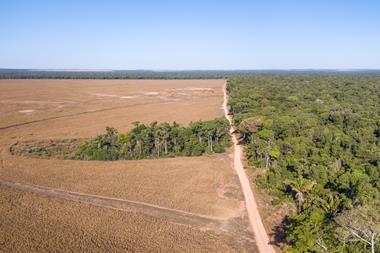British lamb has been flooding out of the country at an unprecedented rate this year, and some industry figures now warn that prices may have to rise to maintain domestic supplies.
Lamb exports saw strong growth in the first five months of the year, rising 16% to 32,000 tonnes.
A spokesman for leading lamb processor Welsh Country Foods said throughput was up 12% on last year. "Additional production had all been destined for the export market and this trend is expected to continue," he said.
But the flow of meat could falter later in the year, according to the MLC's Jean-Pierre Garnier, even though foreign markets were crying out for more. "The lambing percentage of UK flocks has increased, but numbers are still low, particularly following the 2001 foot-and-mouth outbreak, so there may be a shortage in supply.
"Though last spring's lamb crop was good it was late and, coupled with dry weather conditions, there may be fewer lambs for slaughter in the autumn. Production patterns for lamb take a long time to change - it's not something you can just switch on, like producing poultry or manufacturing a product."
Fresh EBLEX figures show that France is still by far the UK's biggest customer with 70% of the export trade. Shipments of sheep meat increased by more than a third, led by demand for shoulders in France and loins in Italy. Demand is also rising in other EU countries, including Finland and the Baltic states.
Wyn Williams of export abattoir Dunbia in Llanybydder said farmers were still quitting the industry and cutting ewe numbers. "Exporters are in competition with domestic suppliers, particularly those meeting supermarket specifications for quality lamb."
"And this summer's dry conditions certainly aren't helping," said HCC/Meat Promotion Wales' marketing manager Stewart Pope. "Come the autumn, reduced lamb numbers could limit exports from Britain. But I think those processors who are exporting to customers will find enough lamb to honour their contracts."
Lamb exports saw strong growth in the first five months of the year, rising 16% to 32,000 tonnes.
A spokesman for leading lamb processor Welsh Country Foods said throughput was up 12% on last year. "Additional production had all been destined for the export market and this trend is expected to continue," he said.
But the flow of meat could falter later in the year, according to the MLC's Jean-Pierre Garnier, even though foreign markets were crying out for more. "The lambing percentage of UK flocks has increased, but numbers are still low, particularly following the 2001 foot-and-mouth outbreak, so there may be a shortage in supply.
"Though last spring's lamb crop was good it was late and, coupled with dry weather conditions, there may be fewer lambs for slaughter in the autumn. Production patterns for lamb take a long time to change - it's not something you can just switch on, like producing poultry or manufacturing a product."
Fresh EBLEX figures show that France is still by far the UK's biggest customer with 70% of the export trade. Shipments of sheep meat increased by more than a third, led by demand for shoulders in France and loins in Italy. Demand is also rising in other EU countries, including Finland and the Baltic states.
Wyn Williams of export abattoir Dunbia in Llanybydder said farmers were still quitting the industry and cutting ewe numbers. "Exporters are in competition with domestic suppliers, particularly those meeting supermarket specifications for quality lamb."
"And this summer's dry conditions certainly aren't helping," said HCC/Meat Promotion Wales' marketing manager Stewart Pope. "Come the autumn, reduced lamb numbers could limit exports from Britain. But I think those processors who are exporting to customers will find enough lamb to honour their contracts."


















No comments yet